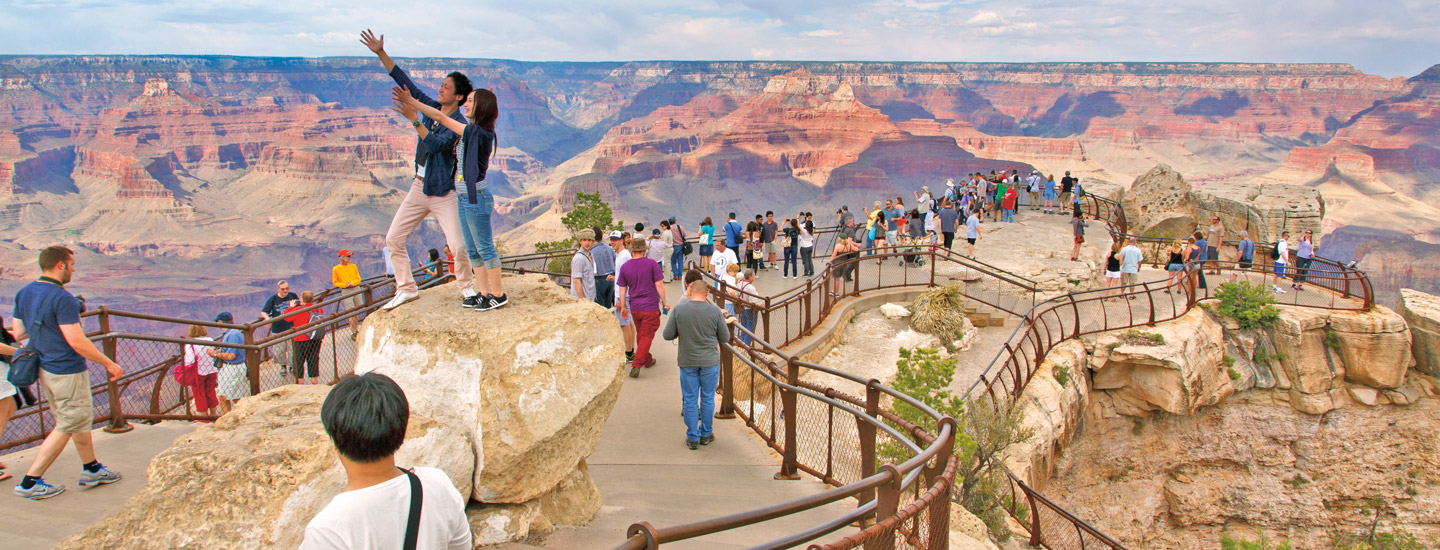Zion National Park in Utah is known for its towering cliffs. From the bottom of Zion Canyon, rocks rise 610 meters (2,000 feet) above your head. A river winds through the canyon, surrounded by beautiful flowers and trees.
With such jaw-dropping scenery, it’s no surprise that Zion and America’s other national parks attract people from around the world. In 2015, a record 305 million people visited national parks. That’s more than attended Disney parks and pro football, baseball, and basketball games combined!
Zion National Park is in Utah. It’s known for its towering cliffs. A river winds through Zion Canyon. Its banks are covered in beautiful flowers and trees. Rocks rise 610 meters (2,000 feet) on either side.
America’s other national parks have similar amazing views. It’s no surprise that they draw people from around the world. A record 305 million people visited national parks in 2015. That’s more than attended Disney parks and pro football, baseball, and basketball games combined!

